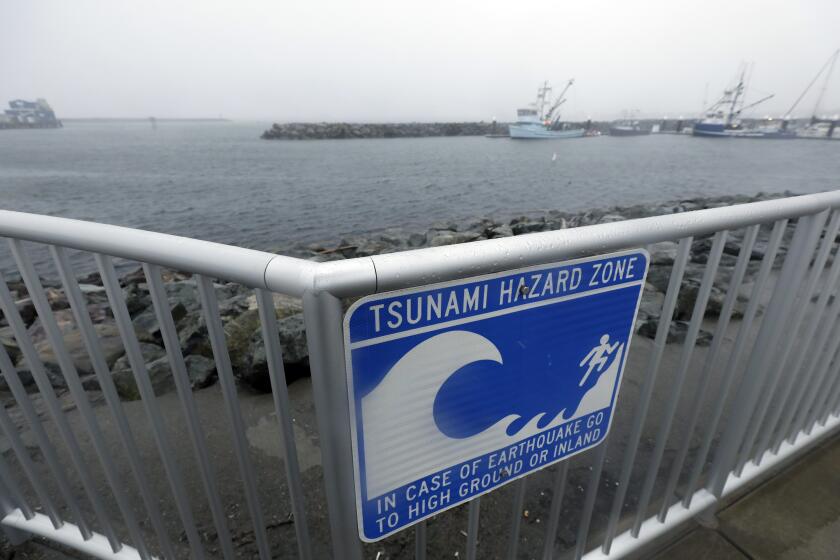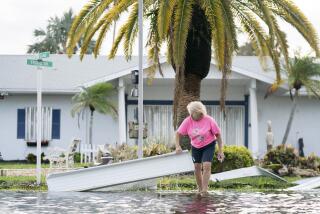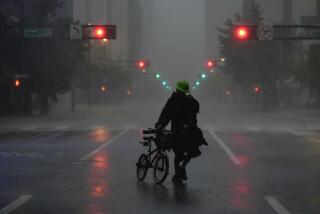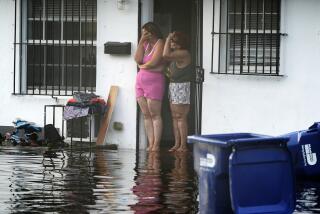Yes, Florida’s coast really was hit by a tsunami. Just not the kind you might think
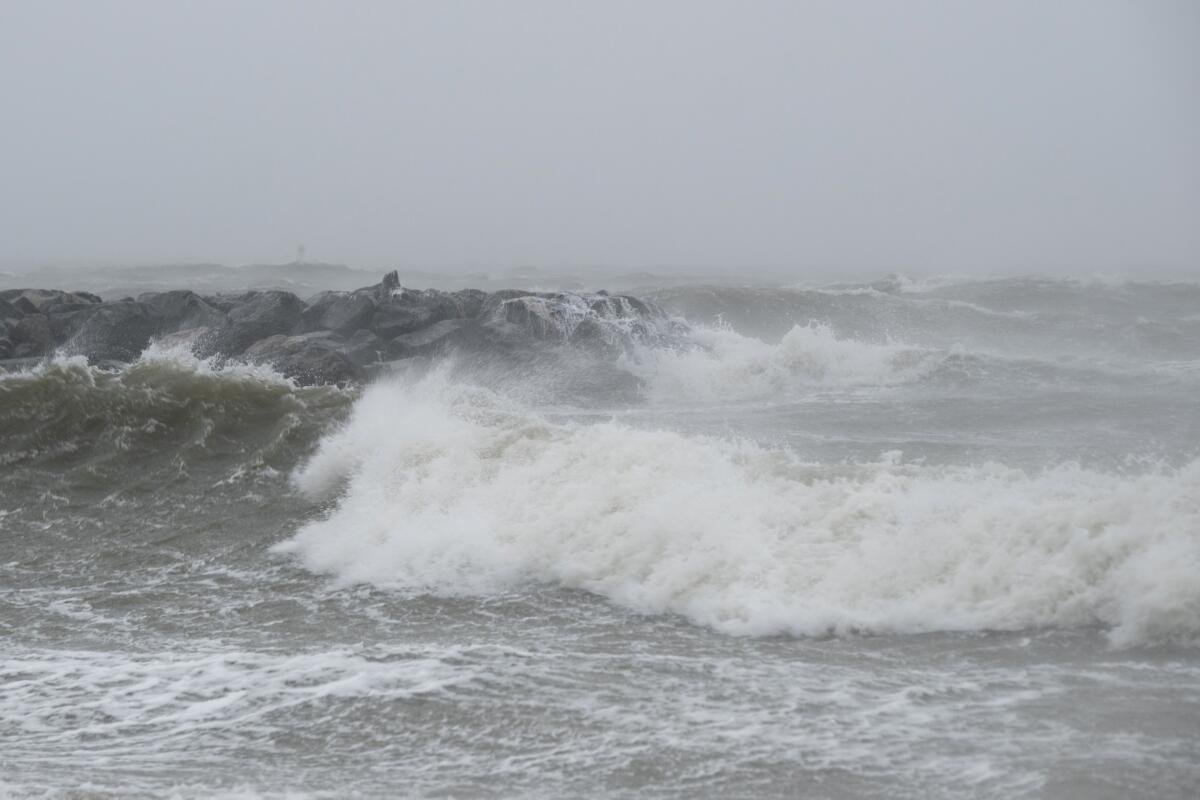
- Share via
An unexpected culprit toppled beach chairs along the sand at normally calm Clearwater Beach, Fla., last week. While West Coast surfers might snicker at the cause, the National Weather Service confirmed that Wednesday’s rare four-foot wave was caused by a kind of tsunami — just not the type you usually hear about.
It was a meteotsunami, a type caused by storms with strong gusting winds, rather than the dramatic tsunamis triggered by earthquakes.
What is a meteotsunami?
According to Paul Close, senior forecaster at the National Weather Service in the Tampa Bay area, when a line of storms tracks over the ocean, there can be 30- to 50-mph winds near the leading edge. The winds push the water, increasing wave height near the coast before the wave eventually crashes onto shore.
Meteotsunamis last only about an hour because once the leading edge of the storm passes onto land, the action subsides.
The meteotsunami was about 2½ feet higher than the forecast wave height and around 4 feet higher than average sea level.
California is hit by about one tsunami a year, but most are barely noticeable. That said, if you live or work near the water or ever visit the coast, you should know what to do if there’s a big earthquake or a tsunami warning.
Six-foot and higher meteotsunamis have been recorded around the world.
The weather service does not issue specific advisories for meteotsunamis. If the agency forecasts that a storm will have substantial impact, it issues a coastal flood watch or warning.
When do meteotsunamis form?
Close said that stronger storms and squall lines — groups of storms that track in a line with intense winds and heavy rain — are more common during the winter around Florida.
“They don’t happen that often this time of year, but the current atmospheric pattern has been kind of unusual with all the heat out in Texas and the cool and damp weather in the Northeast,” Close said.
This time of year, winds from the east are more common, he said. But the winds have been from the west almost all of June.
More to Read
Sign up for Essential California
The most important California stories and recommendations in your inbox every morning.
You may occasionally receive promotional content from the Los Angeles Times.
